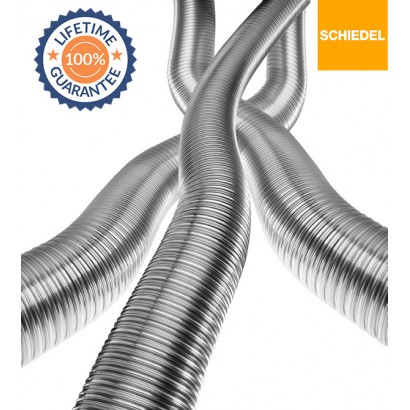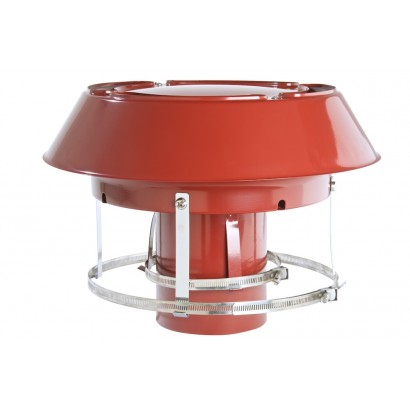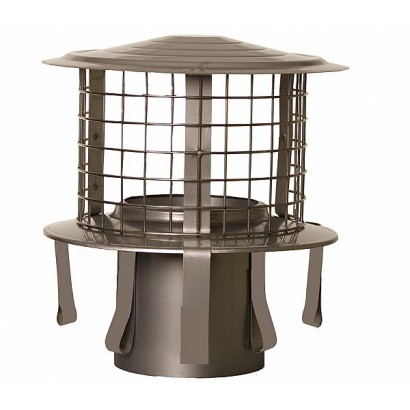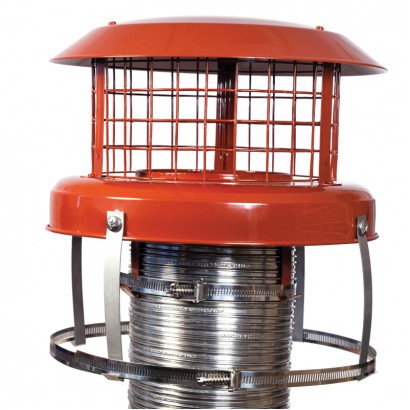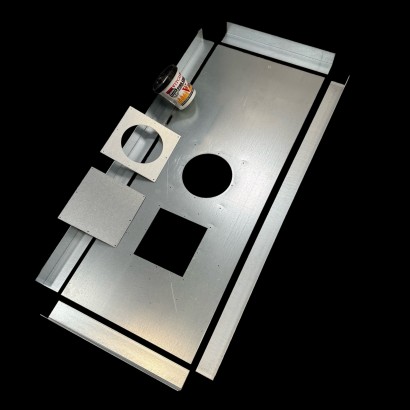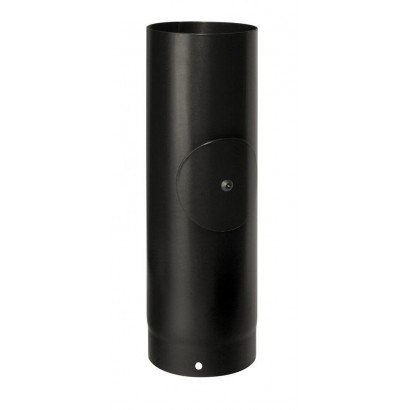Lining a chimney

Lining a chimney: What parts are required?
One of the most common questions that we get asked is ‘What else do I need after I've purchased my stove?’. Here is a run-down of the basics.
1. Chimney Liners
If you've got an existing chimney and you're planning on lining that chimney, then the first question you need to ask yourself is: ‘What diameter liner am I going to require?’. That will generally be based on the outlet size of the stove that you're purchasing. So if the stove has a five inch flue outlet, and is Defra approved, you can install a five inch liner. However, if that stove has a five inch outlet but is not Defra approved, and you're planning on burning wood, then you will need to step that liner up to a 6 inch to comply with the regulations. If the stove you have has a six inch flue outlet, then you will need to install a 6 inch liner or above. You can never reduce it down, it'll always need to be the same diameter as the minimum or greater.
Then you’ll need to think about the length of your liner. Our chimney liners come from five metres, all the way to 15 metres. Always make sure whatever liner you're ordering to order a little bit more than what you think, because there's nothing worse than when you drop a liner down a chimney and it's not long enough. It's always best to have a little bit of excess to cut off any little mistakes on the bottom. The liner itself will be fed down the chimney from the top. The Schiedel liner has arrows on it which need to be facing up. You'll always feed a liner down a chimney, you should never pull on it because you can tear them apart if you pull on them too hard. We also sell nose cones which help guide the liner down the chimney to the bottom around the bends, or you can make your own.
The next question you need to ask yourself is: ‘What fuel will I be burning?’. Predominantly, most people will be burning wood with occasional smokeless fuel. In that case you'll generally need to order a 316 grade liner. If you're going to be burning more smokeless fuel, then you can up that to a higher grade 904 liner. Some people opt for that anyway, I think because they see one is more expensive and go for the more expensive one, which is okay, but if you are just burning wood then the 316 grade liner is absolutely fine and it will save you a little bit of money.
Bestsellers
5" Schiedel Tecnoflex 316 Grade Build Your Own Flexible Liner Kit, (£22.95 Per Meter) (From £114.75)
£114.76 Ex Tax: £95.63
5" Schiedel Tecnoflex 904/904 Grade Build Your Own Flexible Liner Kit, (£39.79 Per Meter) (From £198.95) LIFETIME GUARANTEE -
£198.95 Ex Tax: £165.79
6" Schiedel Tecnoflex 316 Grade Build Your Own Flexible Liner Kit, (£26.95 Per Meter) (From £134.75) LIFETIME GUARANTEE - For Wood / Smokeless Coal / Gas
£134.75 Ex Tax: £112.29
6" Schiedel Tecnoflex 904/904 Grade Build Your Own Flexible Liner Kit, (£44.79 Per Meter) (From £223.95) LIFETIME GUARANTEE
£223.96 Ex Tax: £186.63
2. Cowls

Now let’s take it from the top down and talk about cowls. These are pot hanger cowls made by a company called Colt. We've used them for about eight years now and they make cowls and adapters, too. They’re good reliable pieces of kit, never get any problems with them, always well received and a good price. Obviously, with the cowl it’s something that you don't really want to be replacing if it fails early on because it's a bit of a nightmare getting back up onto the chimney to replace it.
So, the cowl will sit up on the chimney pot, drop down, and then the fins will go around the actual chimney pot. You want to make sure when you're sliding it down you don't put them on the inside, and then a big jubilee clip will wrap around the outside and fix it in place. Then on the base there’s three more clips, and the flue liner will just slot in place. Again, you want to make sure these are on the outside, and then the smaller jubilee clip will just fasten it in place. So that will look a little bit like this when it's attached to the liner itself.

Now these are cowls for normal situations. However, if you know you're in an area that has a really bad downdraught problem and you've had a stove before / an open fire and you've got smoke coming back into your room, and you know that is an issue, we recommend an anti-downdraught cowl. Anti-downdraught cowl’s stop the downdraught from coming down the chimney. It's still a pot hanger so it's got the same clips on the side, and you only really need it if you have a specific downdraught issue.
Bestsellers
5" 125mm Colt Anti Down Draught Pot Hanging Cowl, Chimney Liner Cowls,
£79.00 Ex Tax: £65.83
5" Stainless Steel Chimney Pot Hanger Cowl (Connects To Chimney Liner) - Midtec
£57.00 Ex Tax: £47.50
6" Stainless Steel Chimney Pot Hanger Cowl - (Connects To Chimney Liner) - Midtec
£57.00 Ex Tax: £47.50
6" Terracotta Chimney Pot Hanger Cowl - Colt (Connects To Chimney Liner)
£57.00 Ex Tax: £47.50
3. MA Adapter
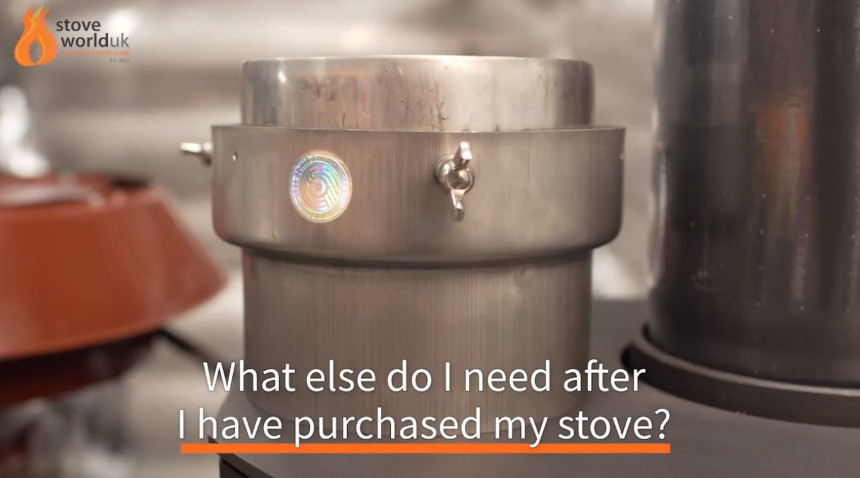
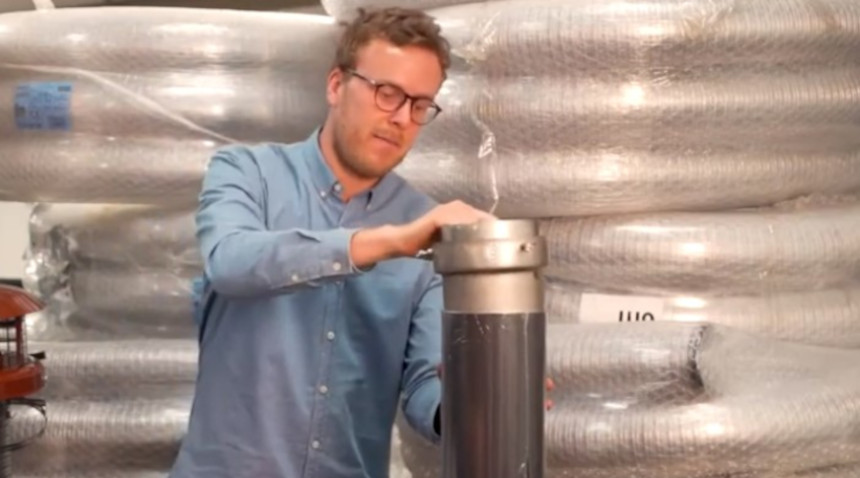
At the bottom of your liner you'll need an MA adapter. The liner will push into it, and the wing nut pieces slot in place and tighten up, and then a few self-tapping screws can go in there too. This will then go inside the flue pipe. The liner will go directly into the adapter and then the flue pipe goes into the stove. Every piece fits inside the other, so any tar or water dripping down the liner goes into the stove and isn't dripping down the outside, burning off, and causing a problem.
Bestsellers
5" Ma adapter - Connects Flue Pipe To Flexible Liner
£25.00 Ex Tax: £20.83
5"-6" Ma adapter - Made by Colt
£35.00 Ex Tax: £29.17
6" Ma adapter - Connects Flue Pipe To Flexible Liner
£27.50 Ex Tax: £22.92
4. Blanking plate
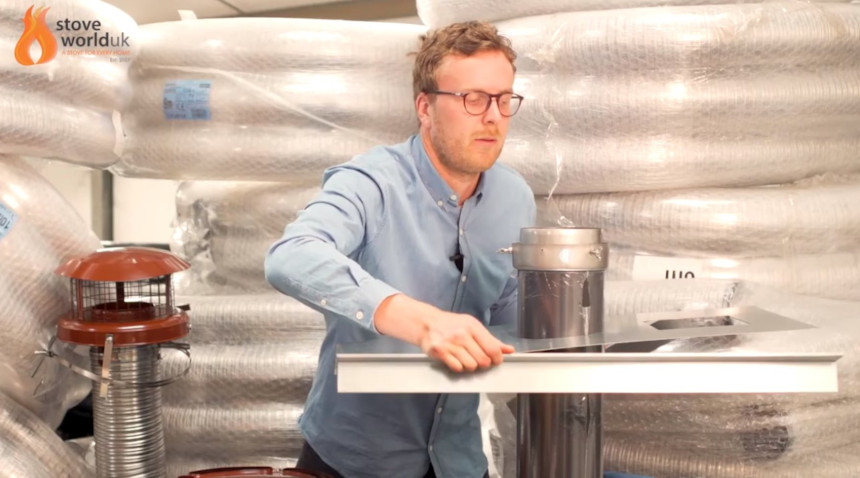
Next we’re going to talk about the blanking plate, or register plate as it’s sometimes called. The liner will be attached to the MA adapter and the tapered end of the adapter will slot into the flue pipe and attach into the chimney. Brackets will then attach around all of the sides to hold it in place. Blanking plates are always cut down to size, they come in sizes:
- 800mm x 400mm
- 1,000mm x 400mm
- 1,250mm x 600mm
All of our blanking plates are designed to all be cut down to size and will always have a six inch hole cut in the middle. If you have a five inch liner going through it, we'll provide a reducer plate which takes it down to a five inch. Our plates also have a hole on the side which gives you access to the inside of the chimney so any debris that falls down can be cleared away.
Bestsellers
Register/Blanking Plate Kit 5" 1000mm x 400mm "with inspection plate"
£48.00 Ex Tax: £40.00
Register/blanking Plate Kit 5" 1250mm x 600mm with inspection plate
£57.00 Ex Tax: £47.50
Register/Blanking Plate Kit 5" 800mm x 400mm with inspection plate
£43.00 Ex Tax: £35.83
Register/Blanking Plate Kit 6" 1000mm x 400mm with inspection hatch
£45.00 Ex Tax: £37.50
5. Fire Cement/Silicone
Our chimney liner kits also come with a tub of fire cement. One tub is enough to easily cover around a blanking plate and inside the top of the flue collar. Some people prefer to use silicone, so if you do prefer to use the silicone, just drop us a message if you're ordering and we'll put that in for you.
Bestsellers
High Quality Black Vitcas Heat Resistant Heat Proof Silicone - 310ml
£10.00 Ex Tax: £8.33
6. Flue Pipe
Our flue pipes are 1.2 mm thick vitreous enamel, Italian-made flue pipes. Again, it's a company we've dealt with for about ten years, they’re easy to install and to use. Our flue pipes come in 250mm, 500mm, or 1,000mm length. The tapered ends go inside the actual flue collars, and then they can be cut down if necessary. The bottom of the flue pipe then goes inside the stove. They do come with access hatches as well, if required. That's useful for some stoves that don't have removable baffle plates is always an advantage.
Bestsellers
1000mm 140mm EURO flue pipe
£35.00 Ex Tax: £29.17
1000mm 6" (150m) flue pipe with access door
£49.00 Ex Tax: £40.83
250mm 5" (125mm) flue pipe
£20.00 Ex Tax: £16.67
90 degree bend 5" (125mm) flue pipe
£35.00 Ex Tax: £29.17
7. CO Alarm
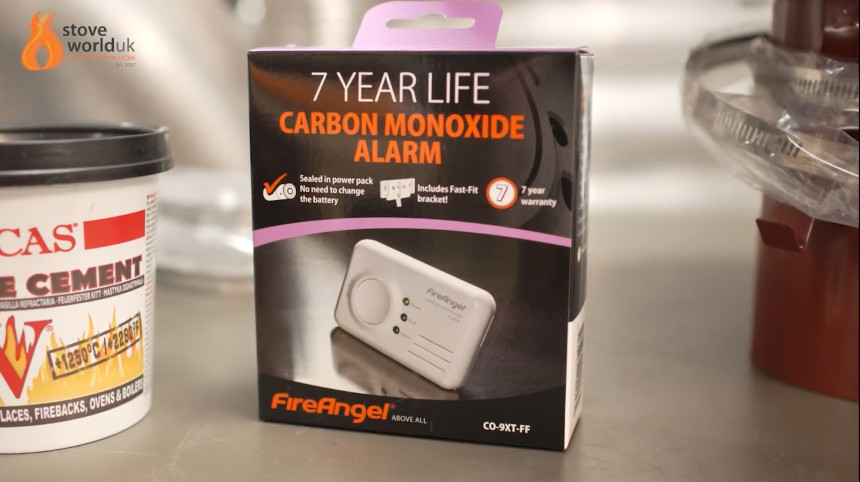
The last thing you will need is a CO alarm. We don't supply them but you can buy them all over the place, including Amazon. A CO alarm is something that's needed for every single installation, whether it be yourself who's installing your stove and getting it signed off, or a HETAS registered installer, you always need to have a CO alarm.
That's generally what most people will need when they're installing a chimney liner, I hope it’s been helpful. All of the things you need come in our Chimney Liner kit, and you can also find them individually on our Chimney Liners & Fittings page.

 0 item(s) - £0.00
0 item(s) - £0.00 